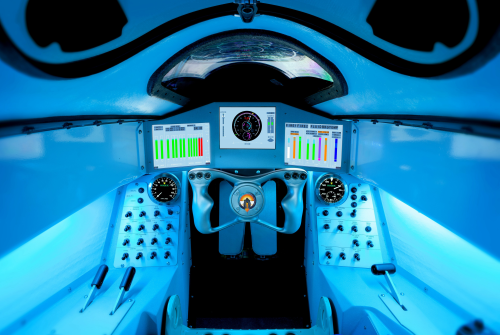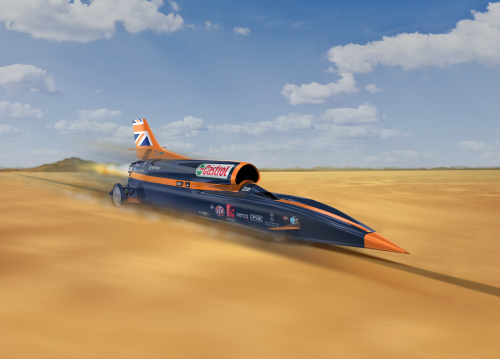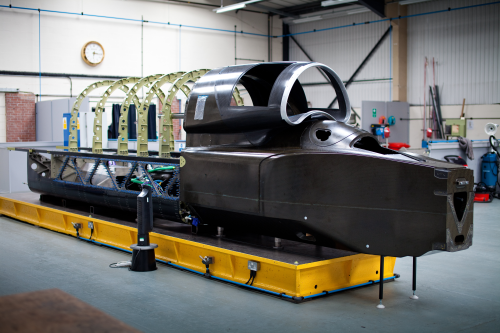


Video: BLOODHOUND SSC driver Andy Green presents the carbon composite monocoque – "a brilliant piece of engineering."
The car will make its record attempts in the South African desert in 2015 and 2016.
Safety cell
The cockpit is a carbon fibre monocoque, tailored to the needs of driver Andy Green and described as "the strongest safety cell in the history of motorsport."
Hand built by URT Group using 5 different types of carbon fibre weave and two different resins, the monocoque has taken more than 10,000 hours to design and manufacture. Sandwiched between the layers of carbon fibre are three different thicknesses of aluminium honeycomb core (8, 12 and 20 mm), which provide additional strength.
At its thickest point the monocoque comprises of 13 individual layers but is just 25 mm in cross section.
The structure weighs 200 kg and bolts directly to the metallic rear chassis carrying the jet, rocket and racing car engine.
The carbon composite front section will have to endure peak aerodynamic loads of up to 3 tonnes/m2 at 1,000 mph (1,609 kph) as well the considerable forces generated by the front wheels and suspension. It will also carry ballistic armour to protect the driver should a stone be thrown up by the front wheels at very high speeds.
Green enters the cockpit via a carbon fibre hatch, 500 mm in diameter, just below the jet air intake. He will sit in a carbon fibre seat, moulded to his body shape by Real Equip, and manufactured by URT Group.
Next steps
BLOODHOUND SSC is currently being assembled at the BLOODHOUND Technical Centre in Bristol, UK. It is on schedule for roll out in summer 2015 when it will undergo UK runway testing up to 200 mph (321 km/h).
The BLOODHOUND team will then deploy to South Africa to begin high speed testing with the target of reaching 800 mph (1287 km/h). The team will return to the UK to review the data and return to South Africa in 2016 with the aim of reaching 1000 mph (1609 km/h).
The BLOODHOUND Project was created a 'global engineering adventure, using a 1000 mph World Land Speed Record attempt to inspire the next generation about science, technology, engineering and mathematics.
- The current World Land Speed Record of 763 mph is held by Thrust SSC, which was driven by Andy Green and developed by BLOODHOUND’s Project Director Richard Noble.
